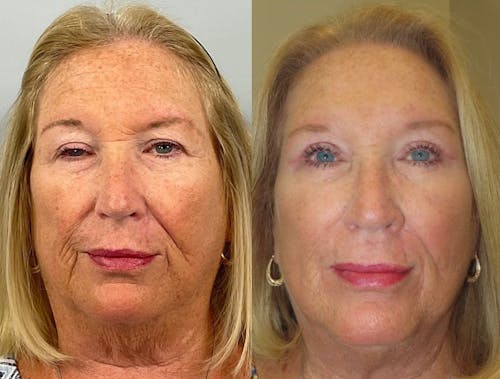See an expert for ptosis (droopy eyelids) in Nashville, TN.
What Causes Ptosis?
Congenital ptosis (present since birth) is due to a poorly developed muscle and can occur in people of all ages. Acquired ptosis is more common in older adults, where the muscle that lifts the eyelid thins and the eyelid drops. It occurs with age, frequent eyelid rubbing, contact lens wear, or trauma. Rarely, a tumor or a neurological problem, such as a nerve palsy or muscle weakness (myopathy), can cause ptosis.












